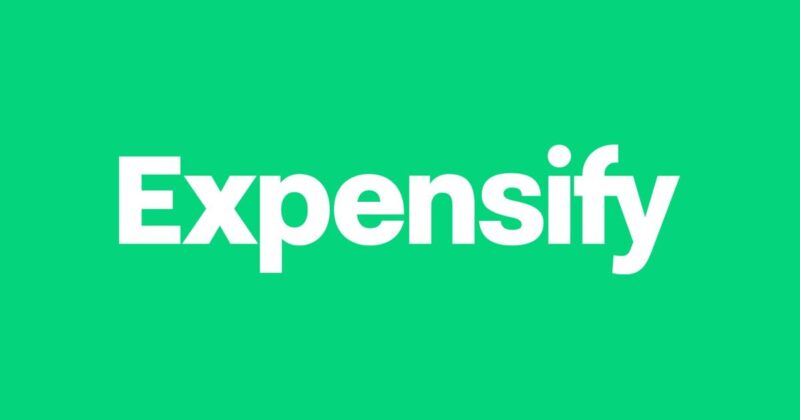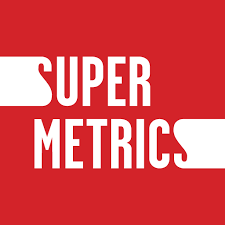In the realm of expense management tools, Expensify and expensify alternative has been a prevalent choice for many businesses. However, as with any software, it comes with its own set of features and limitations. While Expensify offers robust functionality, there are instances where businesses may seek alternatives that better suit their specific needs and preferences. In this article, we’ll delve into the features, limitations, and what sets Expensify apart. Additionally, we’ll explore the need for alternatives and present a comprehensive list of alternative options for expense management.
Features And Limitations Of Expensify

As we wrap up the exploration of the features and limitations of Expensify, let’s now shift our focus to a detailed examination of commonly used expensify alternative in the world of expense management tools.
Features of Expensify
- Effortless Receipt Scanning: Expensify’s advanced OCR technology makes scanning and organizing receipts a breeze, saving time and reducing manual data entry errors.
- Automated Expense Tracking: With real-time tracking, Expensify ensures that all expenses are automatically captured and categorized, providing a clear overview of spending.
- Intuitive Mobile App: The mobile app allows users to manage expenses on the go, snap photos of receipts, and submit reports from anywhere, enhancing flexibility and convenience.
- Smart Integrations: Expensify seamlessly integrates with popular accounting software, facilitating smooth data flow and reducing the need for manual data transfers.
- Policy Enforcement: Expensify enables businesses to set and enforce expense policies, ensuring compliance and preventing unauthorized or excessive spending.
Limitations of Expensify
- Pricing Complexity: Expensify’s pricing structure, while flexible, may be perceived as complex, especially for smaller businesses or those with limited budgets.
- Limited Customization: Some businesses with specific expense management requirements may find Expensify’s customization options somewhat restrictive.
- Learning Curve: While generally user-friendly, new users may experience a learning curve when navigating the various features and settings within Expensify.
- Integration Challenges: While Expensify integrates well with many accounting tools, businesses with unique software ecosystems may face challenges in achieving seamless integration.
- Dependency on Internet Connectivity: Expensify’s cloud-based nature requires a stable internet connection, potentially posing challenges in offline environments.
What Sets Expensify Apart
Expensify distinguishes itself in the realm of expense management through a trifecta of qualities that sets it apart. Renowned for its intuitive user interface, Expensify offers not only simplicity in navigation but a seamless and enjoyable user experience. The robust feature set enhances the efficiency of expense tracking, encompassing everything from receipt scanning to automated report generation. Its versatility is evident in the mobile app, providing users with the flexibility to manage expenses on the go, ensuring that no transaction goes unrecorded, regardless of location.
Furthermore, Expensify’s integration capabilities extend beyond the basic, seamlessly merging with popular accounting software. This integration not only streamlines the workflow but also ensures a cohesive financial ecosystem, where expense management seamlessly integrates with broader financial processes, contributing to enhanced overall organizational efficiency. The widespread adoption of Expensify across businesses of all sizes attests to its reliability and adaptability, solidifying its position as a stalwart in the landscape of expense management solutions.
The Need for Expensify Alternatives

As we’ve explored the features and limitations of Expensify, it becomes evident that businesses, driven by budgetary considerations, unique requirements, integration challenges, and diverse industry applications, often find themselves in pursuit of expensify alternative that offer a more tailored and seamless solution to their evolving expense management needs.
1. Budgetary Considerations
For many businesses, the financial aspect plays a pivotal role in decision-making. Expensify’s pricing plans, while flexible and accommodating for various enterprises, may pose challenges for businesses operating under tighter budgets. As companies strive to optimize their expenses, exploring expensify alternative becomes a strategic move to find a solution that not only meets their expense management needs but does so without stretching their financial resources thin.
2. Unique Business Requirements
Every business is unique in its operations and requirements. Some enterprises may find that Expensify, while robust in its features, doesn’t quite align with their specific expense management needs. Whether it’s a need for more comprehensive customization options or specific functionalities tailored to their industry, businesses with unique requirements often embark on the search for expensify alternative that can provide a more tailored and efficient solution to their particular workflows.
3. Integration Challenges
In the ever-evolving landscape of software and technology, seamless integration with existing systems is paramount. Businesses heavily dependent on intricate software ecosystems may face challenges in integrating Expensify into their current infrastructure. Integration issues can disrupt workflows, create inefficiencies, and potentially lead to data inconsistencies. As a result, enterprises find themselves compelled to seek expensify alternative that not only meet their expense management needs but also integrate seamlessly with their existing tools and platforms.
4. Diverse Industry Applications
Industries vary widely in their operations, regulations, and specific needs. While Expensify serves a broad range of businesses admirably, certain industries may have unique demands that Expensify doesn’t address comprehensively. Whether it’s specialized reporting requirements, compliance issues, or industry-specific nuances, businesses operating in diverse sectors may find that expensify alternative are better equipped to cater to their specific industry demands. Exploring expensify alternative becomes a strategic move for enterprises aiming to enhance efficiency and compliance within their particular sector.
Commonly Used Expensify Alternatives

Now, let’s delve into the intricacies of commonly used Expensify alternatives, each presenting a unique blend of features and advantages catering to diverse business needs and preferences in the realm of expense management.
1. FreshBooks
FreshBooks is a dynamic expensify alternative that goes beyond mere expense tracking. Tailored for freelancers and small businesses, it streamlines financial operations with intuitive features. Beyond expense management, FreshBooks incorporates invoicing and time tracking seamlessly. Its affordability, scalable pricing plans, and a user-friendly interface make it an indispensable tool for those looking to manage expenses while fostering business growth.
2. Zoho Expense
Zoho Expense is a versatile solution offering a holistic approach to expense management. With a suite of features such as receipt scanning, mileage tracking, and customizable approval workflows, Zoho Expense caters to businesses of varying sizes and structures. Affordability is a key factor, ensuring that businesses can deploy a comprehensive expense management system without compromising their budget constraints.
3. QuickBooks Online
QuickBooks Online, a stalwart in the accounting world, extends its capabilities seamlessly into expense tracking. Its integration prowess allows businesses to maintain a cohesive financial ecosystem. Bank reconciliation, financial reporting, and project tracking are seamlessly integrated, making QuickBooks Online an ideal choice for those seeking an all-encompassing accounting solution with robust expense management features.
4. Xero
Xero stands out with its cloud-based expense management tools that offer more than just tracking. Invoicing, payroll, and inventory management seamlessly coexist within Xero’s feature set. The platform’s commitment to real-time collaboration and integration with third-party apps caters to businesses looking for scalable and flexible expense management solutions.
5. Wave
Wave disrupts the landscape with its free accounting and invoicing software. While the core features come at no cost, businesses can opt for paid services like payroll and payments. Wave’s simplicity and affordability make it an attractive proposition for freelancers and small businesses aiming to manage expenses effectively without the burden of substantial costs.
6. Receipt Bank
Receipt Bank revolutionizes expense management with advanced automation capabilities. Extracting data from receipts and invoices, it significantly reduces manual data entry, improving accuracy and efficiency. Businesses seeking to minimize the tedious aspects of bookkeeping find a valuable ally in Receipt Bank’s ability to streamline processes and enhance overall financial operations.
7. Rydoo
Rydoo sets itself apart with a comprehensive suite of expense management solutions. From receipt scanning to policy enforcement and real-time reporting, Rydoo prioritizes user experience and policy compliance. The mobile app adds an extra layer of convenience, ensuring that businesses with a mobile workforce can efficiently submit and approve expenses on the go.
8. Certify
Certify addresses the diverse needs of businesses with its scalable expense management software. From receipt capture and mileage tracking to customizable approval workflows, Certify offers flexibility as businesses grow. The blend of user-friendly features and customizable options makes Certify an attractive choice for businesses seeking a tailored approach to expense management.
9. Concur
Concur presents an end-to-end solution for businesses with complex expense management requirements. Combining travel booking, expense tracking, and invoice management, Concur’s robust reporting tools provide valuable insights. Tailored for larger enterprises, Concur ensures that businesses can efficiently manage expenses while optimizing their overall financial processes.
10. Divvy
Divvy redefines expense management by seamlessly integrating it with corporate card solutions. Real-time tracking and budgeting features empower businesses to control expenses proactively. The inclusion of expense analytics provides valuable insights, making Divvy a strategic choice for businesses looking to optimize spending while maintaining a granular level of control.
Factors To Consider While Choosing The Perfect Expensify Alternative

Having delved into the array of commonly used expensify alternative, the next crucial step is to navigate through the intricate process of selecting the perfect solution for your unique business needs. This journey involves a comprehensive exploration of various factors, each wielding significance in shaping the ideal expense management tool tailored to your organization. So, let’s embark on an insightful examination of the factors to consider while navigating the landscape of expensify alternative, ensuring a strategic and informed decision-making process.
1. Pricing Structure
The pricing structure of an expense management tool is a multifaceted aspect that requires meticulous examination. Beyond the surface-level subscription costs, businesses should delve into the intricacies of pricing plans. It involves assessing potential scalability expenses, understanding the thresholds for pricing tiers, and uncovering any hidden fees that might emerge during usage. A thorough analysis of the pricing structure ensures that the chosen expensify alternative not only aligns with the current budget but also accommodates the potential growth of the business without unforeseen financial implications.
2. Feature Set
Evaluating the feature set goes beyond a mere checklist; it involves aligning the intricacies of each feature with the specific needs and workflows of the business. For example, if advanced receipt scanning is a priority, businesses should delve into the nuances of how well the expensify alternative handles various receipt formats, optical character recognition (OCR) accuracy, and the ease of data extraction. Understanding the depth and flexibility of each feature ensures that the chosen expensify alternative not only provides a broad range of functionalities but also excels in addressing the unique requirements of the business.
3. Integration Capabilities
Seamless integration is the linchpin of a cohesive digital ecosystem. Businesses should scrutinize the integration capabilities of the expensify alternative, ensuring compatibility with existing software systems and platforms. It involves examining the range of APIs, the ease of integration, and the potential for custom integrations if needed. A comprehensive integration strategy minimizes disruptions, optimizes workflow efficiency, and ensures that data flows seamlessly between different facets of the business, creating a holistic and interconnected digital infrastructure.
4. Scalability
The scalability of an expensify alternative is not merely about handling an increasing volume of transactions; it involves adaptability to the evolving needs and complexities of the business. Businesses should assess how well the chosen alternative accommodates growth in terms of user capacity, data storage, and additional features. Scalability ensures that the expense management tool remains a robust and effective solution as the business expands, preventing the need for frequent migrations or software changes that might disrupt established workflows.
5. User Experience
User experience transcends surface-level aesthetics; it encompasses the entire journey of an individual interacting with the expense management tool. Businesses should prioritize alternatives with intuitive interfaces, user-friendly navigation, and minimal learning curves. Delving into the user experience involves assessing the clarity of design, the efficiency of task completion, and the overall satisfaction of users. A positive user experience not only accelerates the adoption of the chosen alternative but also enhances overall productivity by reducing the time spent on training and acclimatization, leading to a more streamlined and effective expense management process.
Conclusion
While Expensify remains a popular choice for expense management, exploring alternative options can uncover solutions better suited to your business’s unique needs. By considering factors such as pricing, features, integration capabilities, scalability, and user experience, you can identify the perfect Expensify alternative that enhances your expense management processes and supports your business’s growth and success.









